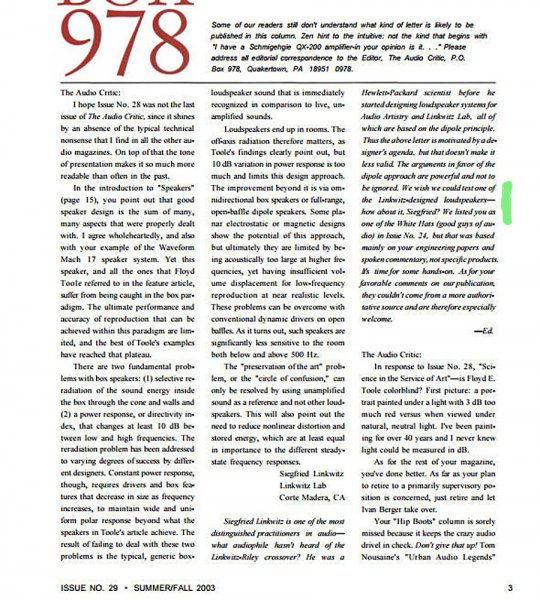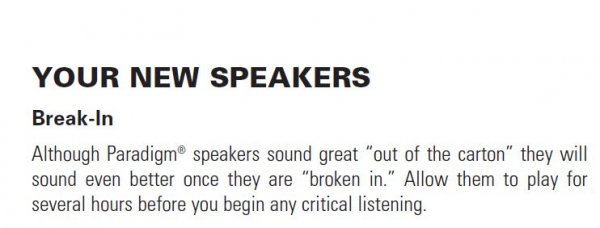Let me comment on another thing before more people want to hang me. And that is the notion of loudspeaker break in. Please don't fall for that.
Let me explain this with a personal story. We have two homes, one with city water and another from private well on our property. The water where we live is very high quality seeing how it rains all the time. We moved a few months ago to our vacation house. I come back to our main home with city water once in a while. I have tea in the morning. After staying in our vacation house for a month, I make my tea and I am shocked that it tastes like pool water! It is as if I am drinking Chlorine. We have lived in our primary house for 18 years and never ever did I detect this. Yet here I am, I can barely drink the water once I got used to having well water with no chlorine.
So what is going on here? Adaptation. Our brain has an amazing ability to filter out what is invariant. It took out the Chlorine since it was always there. I got used to it. Once I started to drink water without it, it built back up the sensitivity to it.
Back to loudspeakers, if you buy a loudspeaker, turn it on and it doesn't sound right, return it! That is the moment of truth. That is when your mind fresh and can detect variations that don't sound right. Do not keep the loudspeaker and let it "break in." Because what is happening instead is that your brain is starting to adapt and filter out what is bad about it sound. The speaker is not improving. It is your detection ability that is degrading!
If the manufacturer insists that such break in is necessary, ask them to break it in and then send it to you.
And yes, this has also been researched and break in makes almost no difference whatsoever to the tonal quality of the loudspeaker. The driver characteristics does change but is not reflected in loudspeaker performance.
Lol, Vas doubles after the woofer breaks in, but that's not audible, right?












